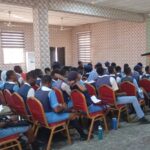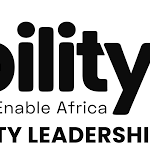By Magdalene Ukuedojor
Experts working with the World Bank in Nigeria to deliver sustainable projects across the country recommend Community-Driven Development (CDD) Approach as a solution for abandoned projects.
Dr Ahmed Ey-Shaa, a World Bank facilitator and programme manager, in an interview with the News Agency of Nigeria (NAN) in Abuja, explained the benefits of the CDD approach.

“CDD means Community-Driven Development.
“It is a new strategy by World Bank and other development partners to make the community to drive the project, to own the project, to sustain the project, to participate in the project.
“It is a bottom-top approach of the World Bank, where people in the community are supposed to have their needs being taken care of.
“They should participate in terms of contribution, in terms of decision-making of the project, in terms of their needs.
“And it will tackle a lot of problems that have to do with the projects.
“Unfortunately, over the years in Nigeria, the issue is about top-bottom approach where the government will just go and implement the project without the input of the community.
“And that’s why you find out that a lot of projects are abandoned; a lot of projects do not go with the needs of the people.
“So CDD is an approach that we need to embrace in this country and that’s why we at the development world, we are trying to push it so that let it become a policy.
“Let it be a kind of rule where any government programme or development project that is taking place in the government, they should embark on this kind of policy.
“CDD is the way to go because it’s going to solve many problems of abandonment, the quality of the project, the sustainability problem and ownership.”
Another expert, Mr Adamu Auta Adamu, highlighted the need to inculcate the “Theory of Change” on project management and development to curb abandonment.

“Basically, the Theory of Change consists of bringing all stakeholders that are part of a project into the whole idea of what the project is all about, and it starts from the beginning of the project design.
“What this does is it helps people to have a feel of what the project is going to achieve, the impact of the project.
“It allows every component of that project, that is individual actors on the project, to understand how the project is going to affect everybody.
“So, everybody can have the knowledge at the initial phase of the project.
“What this does is that it encourages inclusivity, and it ensures that the project doesn’t have setbacks in relation to not carrying people along from the initial stage.
“So, you involve the community where the project needs to be implemented, you involve the projects programmes units of the project, you involve the financial units of the project.
“You involve the gender unit and every other component.
“What this does, it helps ensure inclusivity and brings the project to fruition and completion generally for the benefit of everybody in the community.” (NAN)(www.nannews.ng)












